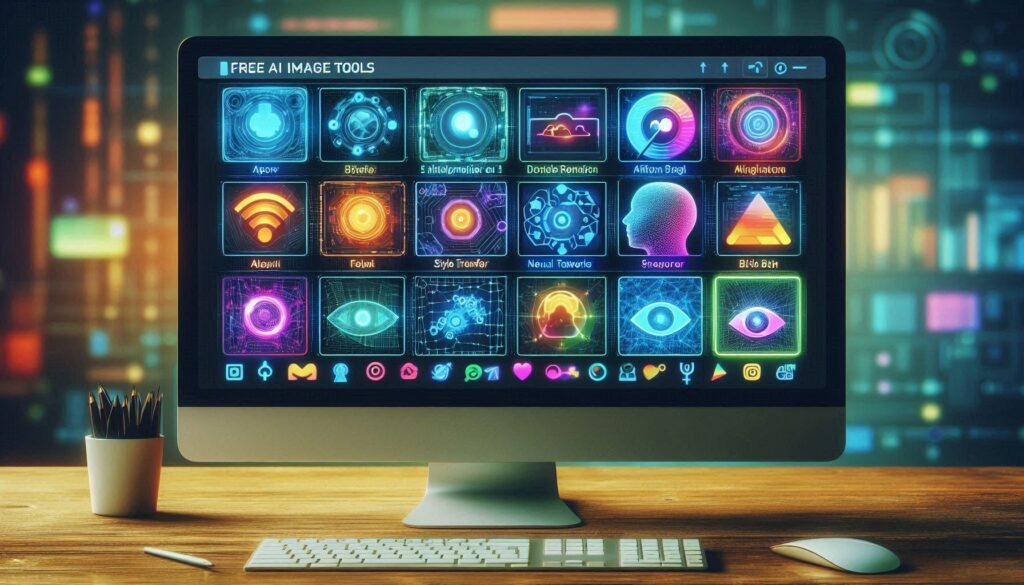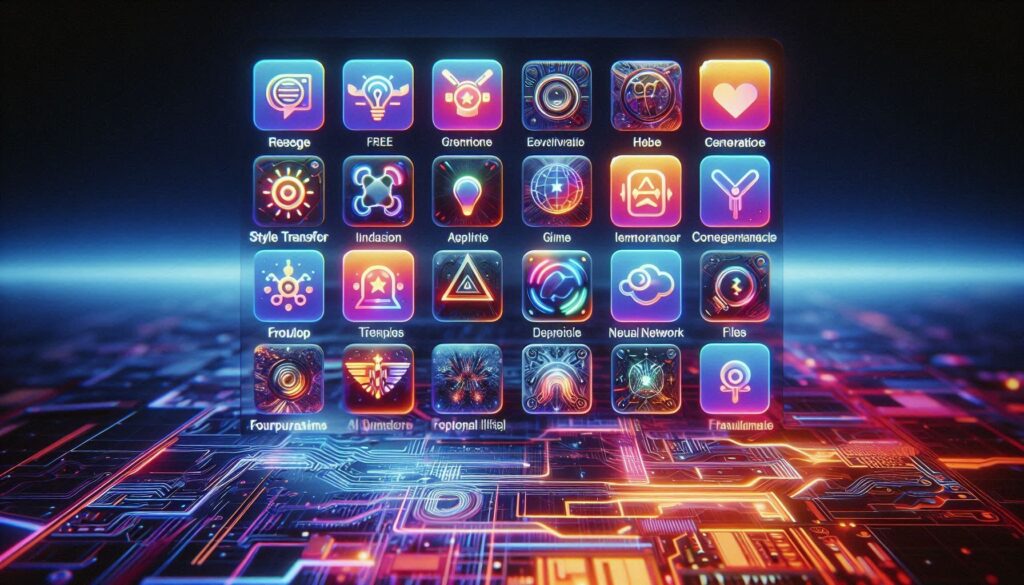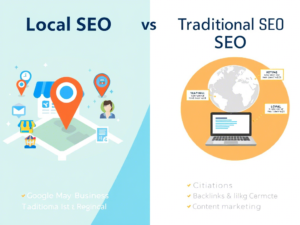Free AI Image Tools
Introduction
Artificial Intelligence (AI) has revolutionized the field of image editing, making complex tasks more accessible and efficient. AI image tools can automatically enhance photos, remove backgrounds, and even generate entirely new images, transforming the way we approach visual content creation.

Importance of AI in Modern Technology
AI is a cornerstone of modern technology, driving innovation across various industries. In image editing, AI tools streamline workflows, reduce manual effort, and enable creative possibilities that were previously unimaginable. The integration of AI in image tools exemplifies how technology can enhance productivity and creativity.
Brief Introduction to AI Image Tools
AI image tools are software applications that leverage machine learning algorithms to perform a variety of image editing tasks. These tools range from basic photo enhancers to advanced applications capable of generating realistic images from scratch. The accessibility of free AI tools has democratized image editing, allowing anyone to create professional-quality visuals.
Table of Contents
What are AI Image Tools?
Definition and Explanation
AI image tools are software applications that use artificial intelligence to perform various tasks related to images. These tools use machine learning algorithms to analyze and manipulate images, making complex editing processes more efficient and accessible.
What are AI Image Tools?
AI image tools cover a wide range of applications designed to enhance, generate, and edit images. They work by using trained models to recognize patterns, objects, and features within images. This allows them to perform tasks such as automatic enhancement, background removal, and even creating new images from scratch.
How Do They Work?
AI image tools operate through machine learning algorithms trained on vast datasets of images. These algorithms learn to identify and replicate patterns, enabling the tools to perform specific tasks. For example:
- An image enhancement tool might adjust brightness and contrast based on learned preferences.
- An image generation tool can create realistic images by understanding and mimicking visual elements.
Types of AI Image Tools
Image Enhancement Tools
These tools use AI to automatically improve the quality of photos. They can adjust lighting, color balance, and sharpness, making images look more professional with minimal effort. Examples include tools that:
- Remove noise
- Enhance details
- Correct exposure
Image Generation Tools
These tools can create entirely new images from scratch. They use AI to understand and replicate visual styles, allowing users to generate realistic images based on text descriptions or other inputs. This category includes applications like:
- Deepfake generators
- AI art creators
Image Editing Tools
These tools leverage AI to simplify and enhance traditional editing tasks. They can perform functions such as:
- Background removal
- Object detection
- Automatic retouching
Popular Free AI Image Tools
Tool 1: GIMP with G’MIC Plugin
GIMP (GNU Image Manipulation Program) is a powerful, open-source image editor that can be enhanced with the G’MIC (GREYC’s Magic for Image Computing) plugin.
Features and Benefits:
- Image Enhancement: G’MIC offers advanced filters for noise reduction, sharpening, and color correction, making it easier to improve the quality of your images.
- Image Editing: GIMP provides a wide range of tools for retouching, background removal, and layer management, allowing for detailed and complex image editing tasks.
- Customization: Both GIMP and G’MIC are highly customizable with various plugins and scripts, enabling users to tailor the software to their specific needs.
- Free and Open Source: GIMP is completely free to use and has a strong community support, making it accessible to everyone.
Tool 2: DeepArt.io
DeepArt.io is an AI-driven tool that transforms photos into artworks using neural networks.
Features and Benefits:
- Artistic Image Generation: DeepArt.io uses AI to apply artistic styles to your photos, turning them into unique pieces of art.
- User-Friendly Interface: The tool has a simple and intuitive interface, making it easy for users of all skill levels to create stunning images.
- Variety of Styles: DeepArt.io offers a wide range of artistic styles to choose from, allowing users to experiment with different looks and effects.
- Free Basic Version: The tool provides a free version with essential features, making it accessible for casual users.
Tool 3: Remove.bg
Remove.bg is a specialized tool for removing backgrounds from images.
Features and Benefits:
- Background Removal: Remove.bg uses AI to automatically remove backgrounds from images with high accuracy, making it ideal for creating transparent backgrounds or isolating subjects.
- Speed: The tool processes images quickly, saving users time and effort.
- Integration: Remove.bg can be integrated with other tools and platforms, enhancing its versatility and usability.
- Free Version: The tool offers a free version with limited resolution, allowing users to try out its features without any cost.
These tools are great for different aspects of image editing and enhancement, and they offer a range of features to suit various needs.
Comparison of Tools
| Tool | Strengths | Weaknesses |
|---|---|---|
| GIMP with G’MIC Plugin | 🌟 Highly customizable and versatile<br>🌟 Strong community support | ⚠️ Steeper learning curve<br>⚠️ Interface can be overwhelming for beginners |
| DeepArt.io | 🌟 Easy to use<br>🌟 Wide range of artistic styles | ⚠️ Limited to artistic transformations<br>⚠️ Free version has limited features |
| Remove.bg | 🌟 Fast and accurate background removal<br>🌟 Easy integration | ⚠️ Limited resolution in free version<br>⚠️ Focused only on background removal |
Detailed Explanation
GIMP with G’MIC Plugin
Strengths:
- Highly Customizable and Versatile: GIMP, combined with the G’MIC plugin, offers a vast array of tools and filters. Users can perform complex image editing tasks, from basic retouching to advanced manipulations.
- Strong Community Support: Being open-source, GIMP has a large and active community. This means plenty of tutorials, plugins, and scripts are available, making it easier to find help and resources.
Weaknesses:
- Steeper Learning Curve: Due to its extensive features, GIMP can be challenging for beginners to master. It requires time and effort to learn how to use it effectively.
- Interface Can Be Overwhelming for Beginners: The interface is packed with tools and options, which can be daunting for new users.
DeepArt.io
Strengths:
- Easy to Use: DeepArt.io is designed with simplicity in mind. Its user-friendly interface allows anyone to transform their photos into artworks with just a few clicks.
- Wide Range of Artistic Styles: The tool offers numerous artistic styles, enabling users to experiment and find the perfect look for their images.
Weaknesses:
- Limited to Artistic Transformations: While it excels at creating artistic images, DeepArt.io is not suitable for general image editing tasks.
- Free Version Has Limited Features: The free version provides basic functionality, but advanced features and higher resolution outputs may require a paid subscription.
Remove.bg
Strengths:
- Fast and Accurate Background Removal: Remove.bg uses AI to quickly and accurately remove backgrounds from images, making it ideal for creating transparent backgrounds or isolating subjects.
- Easy Integration: The tool can be integrated with other software and platforms, enhancing its versatility and making it a valuable addition to any workflow.
Weaknesses:
- Limited Resolution in Free Version: The free version of Remove.bg offers limited resolution, which might not be sufficient for high-quality projects.
- Focused Only on Background Removal: While it excels at its primary function, Remove.bg does not offer other image editing features.
Benefits of Using Free AI Image Tools
Cost-Effectiveness
One of the primary benefits of AI tools is their cost-effectiveness. Here’s how they help save money:
- No Subscription Fees: Free AI image tools eliminate the need for expensive software subscriptions. This is particularly beneficial for individuals and small businesses with limited budgets.
- Avoid Professional Fees: Users can perform high-quality image editing themselves, reducing the need to hire professional services.
- Open Source Options: Many free AI tools, like GIMP, are open source, meaning they are completely free to use and modify, providing long-term savings.
Accessibility
The accessibility of free AI image tools is another significant advantage:
- Wider Audience Reach: These tools are available to a broader audience, regardless of their financial resources. This democratizes access to advanced image editing capabilities.
- No Cost Barrier: By providing powerful editing capabilities at no cost, free AI tools enable more people to create professional-quality visuals.
- Community Support: Many free tools have strong community support, offering tutorials, forums, and plugins that enhance accessibility and usability.
Efficiency
Free AI image tools also offer remarkable efficiency:
- User-Friendly Design: These tools are designed to be intuitive and easy to use, allowing users to achieve desired results quickly and with minimal effort.
- Automated Features: AI-driven tools often include automated features, such as background removal or artistic transformations, which save time and streamline the editing process.
- Enhanced Productivity: The speed and ease of use provided by these tools enhance productivity, making it easier for users to complete their image editing tasks efficiently.
- Benefits of AI Tools: The benefits of AI tools include cost savings, increased accessibility, and enhanced efficiency in image editing.
- Cost-Effectiveness: The cost-effectiveness of free AI image tools allows users to save money while still achieving high-quality results.
- Accessibility: The accessibility of these tools ensures that advanced image editing capabilities are available to a broader audience.
- Efficiency: The efficiency of free AI image tools enables users to complete their tasks quickly and easily.
- Benefits of AI Tools: By offering cost-effectiveness, accessibility, and efficiency, the benefits of AI tools are clear and impactful.
- Cost-Effectiveness: Free AI image tools provide cost-effectiveness by eliminating the need for expensive software or services.
- Accessibility: The accessibility of these tools empowers more people to engage in professional-quality image editing.
- Efficiency: The efficiency of AI tools enhances productivity, making image editing faster and more straightforward.
- Benefits of AI Tools: Overall, the benefits of AI tools are transformative, making advanced image editing more accessible, affordable, and efficient for everyone.

Challenges and Limitations
Quality Concerns
Inconsistent Image Quality
One of the primary challenges with free AI image tools is the potential for inconsistent image quality:
- Variability in Results: Free tools may not always produce professional-grade results. The quality of the output can vary depending on the complexity of the task and the capabilities of the tool.
- Less Accurate Object Detection: Some free AI tools might struggle with accurately detecting objects within an image, leading to errors in tasks like background removal or object isolation.
- Lower Resolution Outputs: Free versions of AI tools often come with limitations on the resolution of the output images. This can result in lower-quality images that may not be suitable for professional use or high-resolution printing.
Limitations in Capabilities
Free AI image tools may also have limitations in their capabilities:
- Restricted Features: Many free tools offer a basic set of features, with advanced functionalities reserved for paid versions. This can limit the scope of what users can achieve with the free version.
- Performance Issues: Free tools might not be optimized for performance, leading to slower processing times and potential lag, especially with larger or more complex images.
- Lack of Customization: Some free tools may not offer the same level of customization as their paid counterparts, restricting users’ ability to tailor the tool to their specific needs.
Potential for Errors
The use of AI in image editing can sometimes lead to errors:
- Algorithmic Mistakes: AI algorithms are not infallible and can make mistakes, such as misidentifying objects or applying incorrect filters.
- Learning Curve: Users may need to spend time learning how to use the tool effectively to minimize errors and achieve the best possible results.
Addressing Quality Concerns
While these quality concerns are valid, there are ways to mitigate them:
- Experimentation: Users can experiment with different tools and settings to find the best combination for their needs.
- Community Resources: Leveraging community resources, such as forums, tutorials, and plugins, can help users overcome limitations and improve their results.
- Upgrading: For those who require higher quality and more advanced features, upgrading to a paid version or using a combination of free and paid tools might be a viable solution.
Learning Curve
Complexity of Tools

AI image tools often come with a wide range of features and functionalities, which can be overwhelming for beginners:
- Advanced Features: Tools like GIMP with the G’MIC plugin offer extensive capabilities, from basic editing to complex manipulations. While this versatility is beneficial, it also means that users need to understand a variety of tools and options.
- Technical Terminology: The use of technical terms and jargon can make it difficult for new users to understand how to use the tools effectively.
Time Investment
Learning to use AI image tools effectively requires a significant time investment:
- Initial Learning Phase: Beginners need to spend time familiarizing themselves with the interface and basic functionalities. This initial phase can be time-consuming and may require patience.
- Continuous Learning: As users become more comfortable with the basics, they need to learn more advanced techniques to fully leverage the tool’s capabilities. This ongoing learning process can be demanding.
User Experience
The user experience can vary significantly depending on the tool:
- User Interface (UI): Some tools have a cluttered or non-intuitive UI, which can make navigation difficult. For example, GIMP’s interface is known to be less user-friendly compared to more streamlined tools like DeepArt.io.
- Support and Resources: The availability of tutorials, guides, and community support can greatly influence the learning curve. Tools with extensive documentation and active user communities can help mitigate the challenges.

Strategies to Overcome the Learning Curve
Start with Basic Tools
Beginners can start with simpler tools that have a more intuitive interface:
- DeepArt.io: This tool is user-friendly and easy to navigate, making it a good starting point for those new to AI image editing.
Leverage Tutorials and Guides
Utilizing available resources can significantly ease the learning process:
- Online Tutorials: Many tools offer comprehensive tutorials and guides. Websites like YouTube, Udemy, and Coursera have numerous courses on using AI image tools.
- Community Forums: Engaging with community forums and discussion groups can provide valuable insights and tips from experienced users.
Practice Regularly
Regular practice is essential to becoming proficient with AI image tools:
- Experimentation: Trying out different features and experimenting with various settings can help users understand the tool’s capabilities and limitations.
- Small Projects: Working on small, manageable projects can build confidence and gradually improve skills.
Privacy Concerns
- Data Collection and Usage:
- Personal Data: When users upload images to AI tools, these images often contain personal information. This data can be used to identify individuals, track their activities, or even infer sensitive information about them.
- Data Retention: Some AI tools may retain uploaded images for extended periods, even after the user has finished using the service. This raises concerns about how long and for what purposes the data is stored.
- Data Sharing:
- Third-Party Access: AI tools might share user data with third parties, such as advertisers or partners, without explicit user consent. This can lead to unwanted marketing or even data breaches if the third parties do not have robust security measures.
- Cross-Border Data Transfers: Data uploaded to cloud-based platforms may be stored in servers located in different countries, subject to varying data protection laws. This can complicate the enforcement of privacy rights.
- Lack of Transparency:
- Opaque Policies: Many free AI tools have privacy policies that are difficult to understand or lack transparency about how user data is handled. Users may not be fully aware of what they are agreeing to when they use these tools.
- Informed Consent: Users often do not receive clear information about how their data will be used, making it challenging to give informed consent.
Security Concerns
- Data Breaches:
- Unauthorized Access: Cloud-based platforms are attractive targets for hackers. If an AI tool’s security measures are inadequate, it can lead to unauthorized access to user data, including personal images.
- Insider Threats: Employees or contractors with access to the data may misuse it, either intentionally or accidentally.
- Vulnerabilities in AI Tools:
- Software Bugs: AI tools, like any software, can have bugs or vulnerabilities that can be exploited by malicious actors to gain access to user data.
- Model Inversion Attacks: Advanced attackers can sometimes reverse-engineer AI models to extract sensitive information from the data used to train them.
- Inadequate Security Measures:
- Weak Encryption: If the data is not properly encrypted during transmission and storage, it can be intercepted and accessed by unauthorized parties.
- Poor Access Controls: Lack of strong access controls can allow unauthorized users to access sensitive data.
Mitigating Privacy and Security Risks
- Choosing Reputable Tools:
- Research: Users should research and choose AI tools from reputable providers with strong privacy and security track records.
- Reviews and Ratings: Checking user reviews and ratings can provide insights into the reliability and safety of the tools.
- Understanding Privacy Policies:
- Read Policies: Users should take the time to read and understand the privacy policies of the AI tools they use.
- Ask Questions: If anything is unclear, users should not hesitate to contact the provider for clarification.
- Data Minimization:
- Limit Uploads: Users should only upload the minimum amount of data necessary for the tool to function.
- Anonymization: Where possible, users should anonymize their data before uploading it to reduce the risk of identification.
- Using Security Features:
- Encryption: Ensure that the AI tool uses strong encryption for data transmission and storage.
- Two-Factor Authentication: Enable two-factor authentication (2FA) for an added layer of security.
By being aware of these privacy and security concerns and taking proactive steps, users can better protect their personal data while benefiting from the capabilities of AI tools.
Future of AI Image Tools
Technological Advancements
The future of AI tools in image editing is poised for significant technological advancements. Innovations such as improved machine learning algorithms and enhanced neural networks will lead to more accurate and efficient AI image tools. These advancements will enable tools to perform complex tasks like real-time image generation and advanced photo manipulation with greater precision.

Market Trends
The market trends for AI image tools indicate a growing demand and widespread usage. As more industries recognize the benefits of AI, the adoption of these tools is expected to increase. The future of AI tools will see them becoming integral to sectors such as marketing, entertainment, and e-commerce, where visual content plays a crucial role.
Potential Impact
The potential impact of AI image tools on various industries is profound. In marketing, AI tools can create personalized and engaging visuals, enhancing customer experiences. In healthcare, they can assist in medical imaging and diagnostics. The future of AI tools will also influence creative fields, enabling artists and designers to push the boundaries of their work.
- Future of AI tools: The future of AI tools promises groundbreaking technological advancements that will revolutionize image editing.
- Technological advancements: Expected technological advancements in AI will lead to more precise and efficient image tools.
- Market trends: Current market trends show a growing demand for AI image tools across various industries.
- Potential impact: The potential impact of AI tools is vast, influencing sectors from marketing to healthcare.
- Future of AI tools: As the future of AI tools unfolds, we can expect them to become even more integral to our daily lives.
- Technological advancements: Continuous technological advancements will enhance the capabilities of AI image tools.
- Market trends: Observing market trends, it’s clear that the usage of AI tools will continue to expand.
- Potential impact: The potential impact of AI tools will drive innovation and efficiency in numerous fields.
- Future of AI tools: Ultimately, the future of AI tools holds immense promise for transforming how we create and interact with visual content.
Conclusion
Free AI image tools have revolutionized the way we create and manipulate images. They offer accessibility, cost-effectiveness, and a wide range of features that cater to both amateurs and professionals. However, challenges such as quality control, copyright issues, and the need for technical know-how remain.
Recap of the Main Benefits and Challenges
The main benefits of free AI image tools include their accessibility and cost-effectiveness. They democratize image creation, allowing anyone with an internet connection to produce high-quality visuals. On the flip side, challenges like inconsistent quality, potential copyright infringements, and the learning curve associated with these tools can be significant hurdles.
Final Thoughts
While free AI image tools are not without their challenges, their benefits often outweigh the drawbacks. They provide a valuable resource for individuals and businesses looking to enhance their visual content without incurring high costs. As technology advances, we can expect these tools to become even more user-friendly and powerful.
The Future Outlook for Free AI Image Tools
The future outlook for free AI image tools is promising. As AI technology continues to evolve, these tools will likely become more sophisticated, offering even greater capabilities and ease of use. The summary of AI tools available today shows a trend towards more intuitive interfaces and higher-quality outputs. Looking ahead, the future outlook suggests that free AI image tools will play an increasingly important role in various industries, from marketing to education.
By focusing on the summary of AI tools and their future outlook, we can see that these tools are set to become indispensable in the digital age. The future outlook for these tools is bright, with continuous improvements and innovations on the horizon.
FAQs ( frequently asked questions )
What are AI image tools?
AI image tools are software applications that use artificial intelligence to create, edit, or enhance images. Examples include DALL-E 3, which generates detailed images from text prompts, and Canva, which offers user-friendly design features for beginners.
Are free AI image tools reliable?
Free AI image tools can be reliable, but their quality may vary. Some, like Leonardo AI, offer high-quality outputs even in their free versions. However, users might encounter limitations in features or occasional inconsistencies in image quality
How can I choose the best AI image tool?
When choosing AI tools, consider factors like ease of use, available features, and the quality of outputs. Tools like DALL-E 3 are great for detailed and complex images, while Canva is ideal for beginners due to its intuitive interface.
What are the privacy concerns with AI image tools?
Privacy concerns with AI image tools include data security and the potential misuse of personal information. It’s crucial to review the privacy policies of these tools to understand how your data is used and protected





